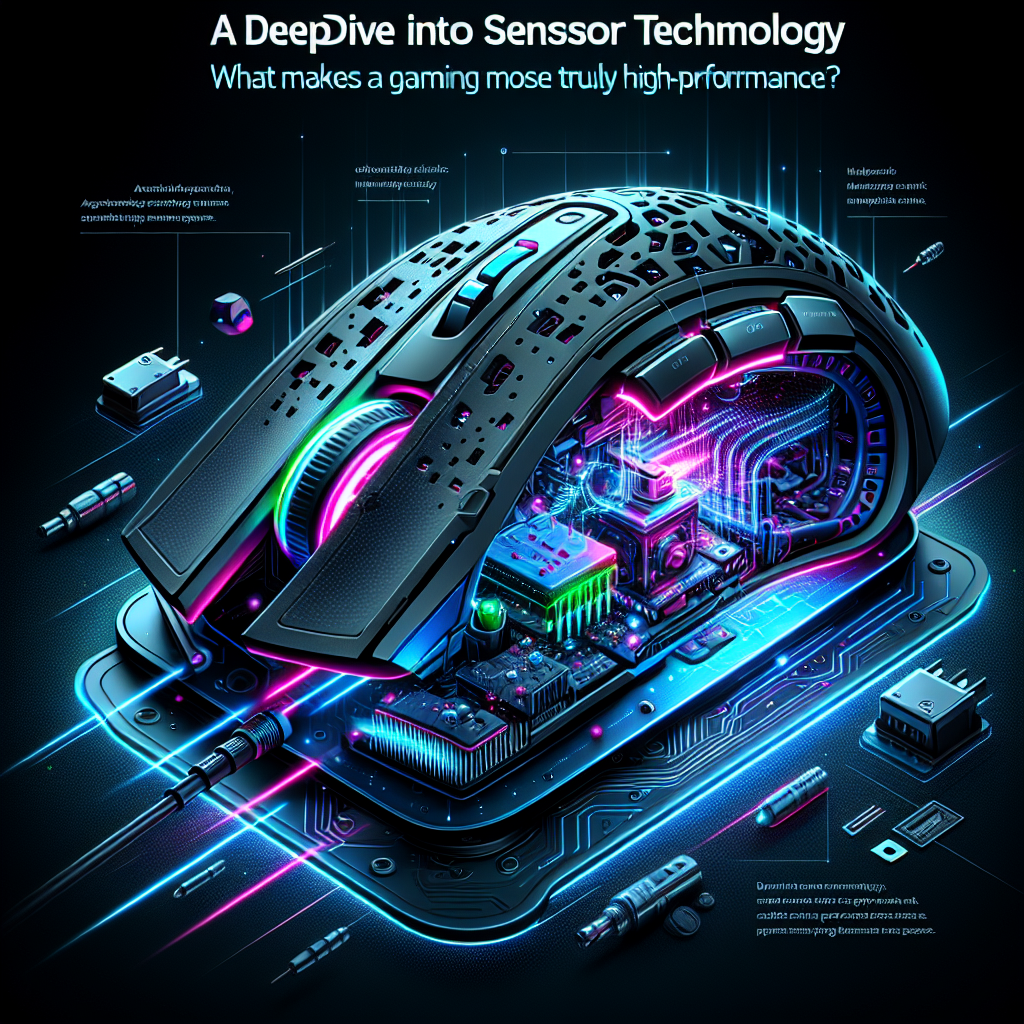A Deep Dive into Sensor Technology: What Makes a Gaming Mouse Truly High-Performance?
In the world of gaming, where split-second decisions can mean the difference between victory and defeat, the tools of the trade are as critical as the skill of the player. Among these tools, the gaming mouse stands out as one of the most vital components. But what truly sets a high-performance gaming mouse apart from its standard counterparts? The answer lies in its sensor technology. This article takes a deep dive into the intricacies of sensor technology and uncovers what makes a gaming mouse truly high-performance.
The Role of Sensor Technology in Gaming Mice
At its core, a gaming mouse’s performance hinges on its sensor. The sensor is responsible for tracking the movements of the mouse across surfaces, translating those movements into cursor movements on the screen. There are two primary types of sensors utilized in gaming mice: optical and laser.
1. Optical Sensors
Optical sensors use a light-emitting diode (LED) to illuminate the surface below. As the mouse moves, the sensor captures images of the surface at a rapid rate, detecting changes in the patterns of reflected light to determine the movement. Optical sensors have several advantages:
- Precision: Optical sensors tend to offer better precision on a variety of surfaces, making them ideal for high-precision gaming.
- Lower Lift-off Distance: A gaming mouse equipped with an optical sensor typically has a lower lift-off distance— the height at which the sensor stops tracking movement. This feature allows gamers to reposition their mouse without causing unintended movements on-screen.
- Less Acceleration: Optical sensors often have less angle snapping and acceleration, meaning the cursor movement more accurately reflects the user’s hand movements, a critical feature in competitive gaming.
2. Laser Sensors
Laser sensors, on the other hand, use laser light instead of LEDs to track movement. They can be more versatile and capable of tracking on a wider array of surfaces, including glossy or transparent ones. Here are their key characteristics:
- Higher DPI: Laser sensors generally allow for higher DPI (dots per inch) settings, enabling faster speeds and more sensitive tracking.
- Versatility: The ability to track on more surfaces makes laser sensors a good choice for gamers who may not always have access to a mouse pad.
While both optical and laser sensors have their strengths, many high-performance mice favor optical sensors due to their precision and reliability.
Key Metrics of Sensor Performance
When evaluating a gaming mouse’s performance, several technical specifications come into play:
1. DPI (Dots Per Inch)
DPI measures how far the cursor moves on-screen in relation to the distance the mouse is moved. A higher DPI means more sensitivity, allowing for quicker movements. However, excessive DPI can lead to precision issues. Professional gamers often prefer a range between 400 to 1600 DPI, striking a balance between speed and control.
2. Polling Rate
The polling rate indicates how often the mouse reports its position to the computer—measured in Hertz (Hz). A higher polling rate means smoother, more responsive movements. Many high-performance gaming mice offer polling rates of 1000 Hz or higher, translating to a report every millisecond.
3. Tracking Speed
Tracking speed reflects how quickly the sensor can track movement without losing accuracy, measured in inches per second (IPS). High-performance gaming mice typically feature tracking speeds of 300 IPS or more, ensuring responsiveness during rapid motions.
4. Acceleration
Acceleration refers to the mouse’s ability to maintain accuracy at higher speeds. For competitive gaming, having a low acceleration rate (often 1g or less) is preferred, ensuring precision even during quick swipes.
Beyond the Sensor: Additional Features
While sensor technology is paramount, other features enhance the performance of a gaming mouse:
1. Customizable Settings
Top-tier gaming mice often allow gamers to customize DPI settings, polling rates, and button configurations via software. This flexibility ensures that players can tailor their equipment to their unique playing style.
2. Ergonomics and Design
A high-performance gaming mouse also considers ergonomics. The shape, materials, and weight of the mouse contribute to comfort during extended gaming sessions. Players often have different preferences regarding grip styles, leading to an array of designs tailored to different hand sizes.
3. Build Quality
Durability is another vital aspect. High-performance mice often feature robust materials, quality switches, and reinforced cables, ensuring they can withstand the rigors of gaming.
Conclusion
In conclusion, the performance of a gaming mouse is deeply intertwined with its sensor technology. Understanding the types of sensors, key metrics, and complementary features can help gamers select a mouse that enhances their gameplay experience. As technology continues to evolve, gamers can anticipate even greater precision, responsiveness, and tailored experiences that push the boundaries of competitive gaming. Whether you’re an aspiring pro or a casual gamer, investing in a high-performance gaming mouse equipped with advanced sensor technology could be the game-changer you’ve been searching for.




